What France might look like in the year 2050
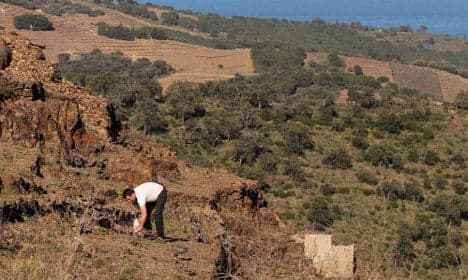
With the crucial COP21 climate summit kicking off in Paris on Monday here's a look at what France might look like in 2050 if temperatures continue to rise.
A science magazine's predictions for what France will be like in the year 2050 sound a little like scenes from a disaster movie, well at least for those who love Bordeaux wine.
A recent report from the magazine Science et Avenir (Science and Future) has painted a interesting picture of France in 35 years’ time.
Released in the run up to the UN climate talks in Paris, the special report, entitled ‘Climate: What awaits us in France’, looks at the dramatic impact climate change could have on the country.
"We will need to rethink about life, about how we use water and agriculture. There is already an enormous amount of research taking place in France to see how we can adapt to the changes," Rachel Mulot from Sciences et Avenir told BFM TV.
Here's some of their conclusions.
Longer heatwaves
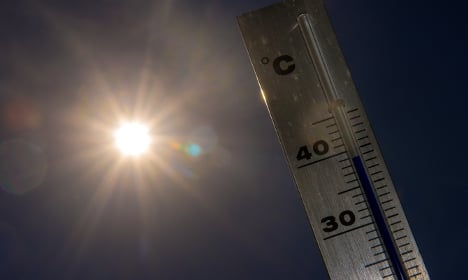
If you thought this summer’s record-breaking heatwave was a one-off then think again.
According to the Sciences et Avenir, France will experience between five to ten more days of heatwaves per year between the years 2021 and 2050.
“The heatwaves will increase in frequency, length and amplitude,” Robert Vautard, director of the Laboratory of Climate Science and the Environment (LSCE) at the Atomic Energy Commission told the magazine.
While the South West will see the brunt of the scorching weather, the traditionally cooler north of the country will not escape the punishing sun.
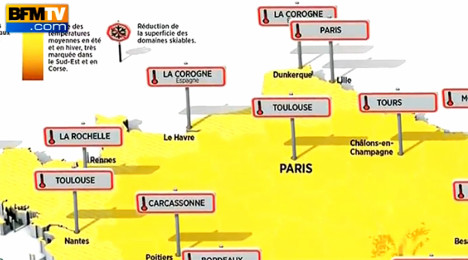
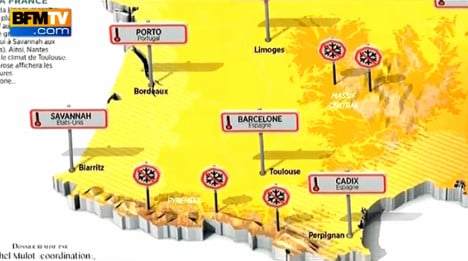
The South West will see the brunt of the scorching weather. Screengrab: BFMTV
Temperatures in the northern city of Dunkirk are expected to equal those of the north-western Spanish town of La Coruna today, while Paris will enjoy the kind of climate that Toulouse has. Perhaps that will stop Parisians from wanting to move to the south west.
Or maybe not, because by 2050 Toulouse will have the kind of climate that Barcelona has,the magazine predicts and Perpignan will be like Cadiz in the south of Spain.
The winters will also be warmer, with just one to four days of abnormally cold weather, according to the magazine.
And consequences could be deadly. Back in 2003 around 15,000 people died in France as a result of the heatwave so France could expect more heatwave related deaths in the future.
Changing landscapes
The changing climate could also have a dramatic effect on the varied French landscape, where the south appears more like Mediterranean Spain.
However with temperatures to rise, that drier Mediterranean landscape will start to spread further north.
The magazine notes that at the moment the scenery changes around the southern town of Valance (see map).
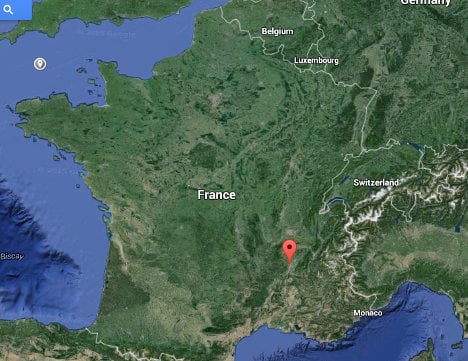
But by 2050 the French landscape as far north as Auxerre in northern Burgundy will look like the south of France.
There will also be a change to the coastline with sea levels continuing to rise, meaning more coastal flooding and coastal erosion, especially on the west where it's already taking place at a speedy rate.
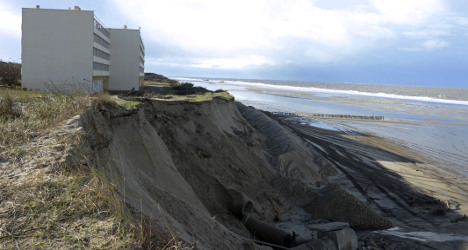
Some of the country's most famed Unesco World Heritage sites will be threatened.
Bordeaux wine made in Brittany
Unsurprisingly, changes to the French climate could also have a significant impact on agriculture, and in particular, on French wine production.
Hervé Quénol, from the National Centre for Scientific Research (CNRS), notes in the report that an average increase of 1 degree Celsius will result in a migration of crops by as much as 100km.
Viticulture, which is the most influenced by climate change, will be among the worst affected, according to Quénol.
“If the increase in temperature stays at 1 or 2 degrees Celsius, close to the natural variability, wine-growers will be able to adapt in all regions thanks to the new grape varieties, new methods of vinification and alcohol removal, etc.”
But he warned that an increase of 4 or 5 degrees could spell disaster for France’s wine industry.
As a result, the climate in the western region of Brittany may be more adapted to the production of Bordeaux wines and Corsica more adapted to producing Sidi Brahim wines, which are mostly produced in Algeria.
SEE ALSO: Bordeaux vineyards to dry up by 2050
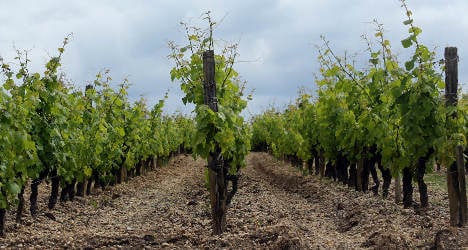
Comments
See Also
A science magazine's predictions for what France will be like in the year 2050 sound a little like scenes from a disaster movie, well at least for those who love Bordeaux wine.
A recent report from the magazine Science et Avenir (Science and Future) has painted a interesting picture of France in 35 years’ time.
Released in the run up to the UN climate talks in Paris, the special report, entitled ‘Climate: What awaits us in France’, looks at the dramatic impact climate change could have on the country.
"We will need to rethink about life, about how we use water and agriculture. There is already an enormous amount of research taking place in France to see how we can adapt to the changes," Rachel Mulot from Sciences et Avenir told BFM TV.
Here's some of their conclusions.
Longer heatwaves

If you thought this summer’s record-breaking heatwave was a one-off then think again.
According to the Sciences et Avenir, France will experience between five to ten more days of heatwaves per year between the years 2021 and 2050.
“The heatwaves will increase in frequency, length and amplitude,” Robert Vautard, director of the Laboratory of Climate Science and the Environment (LSCE) at the Atomic Energy Commission told the magazine.
While the South West will see the brunt of the scorching weather, the traditionally cooler north of the country will not escape the punishing sun.


The South West will see the brunt of the scorching weather. Screengrab: BFMTV
Temperatures in the northern city of Dunkirk are expected to equal those of the north-western Spanish town of La Coruna today, while Paris will enjoy the kind of climate that Toulouse has. Perhaps that will stop Parisians from wanting to move to the south west.
Or maybe not, because by 2050 Toulouse will have the kind of climate that Barcelona has,the magazine predicts and Perpignan will be like Cadiz in the south of Spain.
The winters will also be warmer, with just one to four days of abnormally cold weather, according to the magazine.
And consequences could be deadly. Back in 2003 around 15,000 people died in France as a result of the heatwave so France could expect more heatwave related deaths in the future.
Changing landscapes
The changing climate could also have a dramatic effect on the varied French landscape, where the south appears more like Mediterranean Spain.
However with temperatures to rise, that drier Mediterranean landscape will start to spread further north.
The magazine notes that at the moment the scenery changes around the southern town of Valance (see map).

But by 2050 the French landscape as far north as Auxerre in northern Burgundy will look like the south of France.
There will also be a change to the coastline with sea levels continuing to rise, meaning more coastal flooding and coastal erosion, especially on the west where it's already taking place at a speedy rate.

Some of the country's most famed Unesco World Heritage sites will be threatened.
Bordeaux wine made in Brittany
Unsurprisingly, changes to the French climate could also have a significant impact on agriculture, and in particular, on French wine production.
Hervé Quénol, from the National Centre for Scientific Research (CNRS), notes in the report that an average increase of 1 degree Celsius will result in a migration of crops by as much as 100km.
Viticulture, which is the most influenced by climate change, will be among the worst affected, according to Quénol.
“If the increase in temperature stays at 1 or 2 degrees Celsius, close to the natural variability, wine-growers will be able to adapt in all regions thanks to the new grape varieties, new methods of vinification and alcohol removal, etc.”
But he warned that an increase of 4 or 5 degrees could spell disaster for France’s wine industry.
As a result, the climate in the western region of Brittany may be more adapted to the production of Bordeaux wines and Corsica more adapted to producing Sidi Brahim wines, which are mostly produced in Algeria.
SEE ALSO: Bordeaux vineyards to dry up by 2050

Join the conversation in our comments section below. Share your own views and experience and if you have a question or suggestion for our journalists then email us at [email protected].
Please keep comments civil, constructive and on topic – and make sure to read our terms of use before getting involved.
Please log in here to leave a comment.